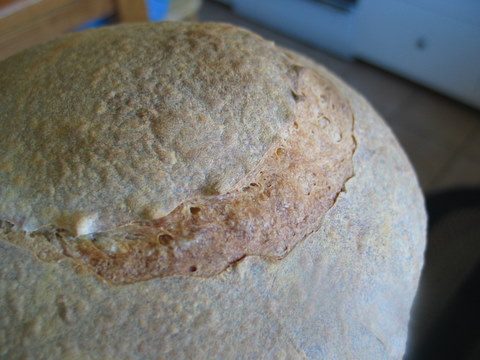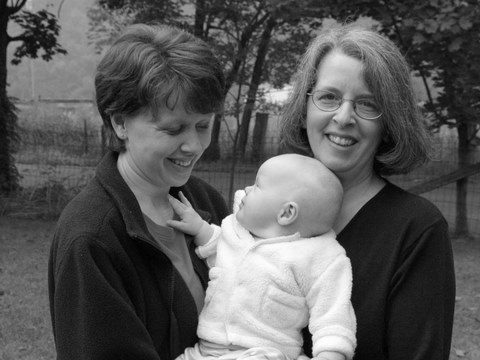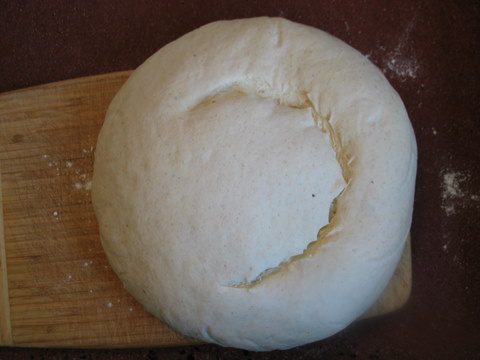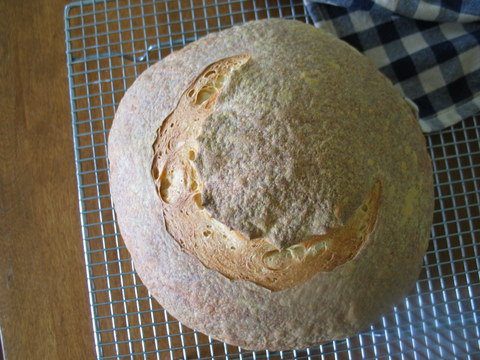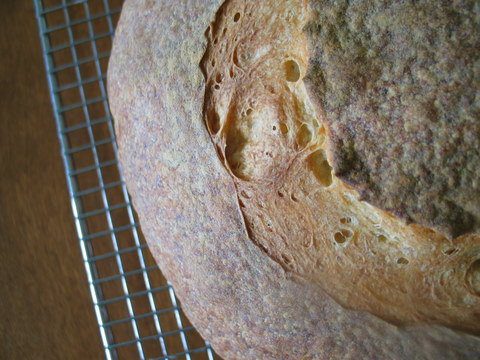An excerpt from our book, in my mother‘s words.

My mother, with Baby Sweetsie and me
******************************
Washes of pain, my husband making annoying solicitous noises and the big round clock glaring at me from the wall. My gurney ride down the night hall. Finally, at 2:28 a.m., one last burst of maniacal bearing down, my face screwed into a prune, and whoosh. They laid the baby on my belly and in a delirium of relief and amazement I gazed at this new wet, naked creature. After my husband held her a delivery room nurse put her to my breast and right away she latched on, making the staffers crow. Then they trundled her off to the hospital nursery.
My husband gone, in my room down the hall I waited. They’d said I could keep her with me after the first few hours. I was way too exhilarated and wired to sleep. A laboring woman’s groans drifted my way. One nurse after another bustled in to check my blood pressure.
Daylight came, and my breakfast tray, and still I waited.
“How soon am I allowed to have my baby?” I asked, midmorning. The nurse’s answer came too promptly, it seemed to me. “Twenty-four hours,” she replied. I looked at her in alarm. Another more cheerful nurse contradicted, “Oh, no, eight to twelve hours. It all depends.” They both whisked away.
Was there trouble? I recalled how quiet the baby had been at first. Right off, she’d made just a tired little squeak. But then she’d wailed loudly—she’d cried hard. She’d looked perfect. Had something gone wrong?
A snippy nurse brought me pills, tiny red ones. Didn’t they give women pills to dry up their milk? Where was my baby? “What are these pills for?” I blurted.
“To put your tummy back in shape.” The nurse acted in too much of a hurry.
People were whispering out in the hall, and the doctor strode in. He asked how I was feeling. He’ll think I’m some kind of a nut, I thought. But I questioned him anyway.
“Something wrong? No, no, no. Your baby’s in the nursery.” But he was too hearty, reassuring. Wasn’t this how people acted when they lied?
Knowing I might as well face the truth, I persisted. “Can’t I at least see her?” He glanced at that snippy nurse who’d come in with him, and they agreed to find someone to accompany me to the nursery.
Ages passed. I had them trapped. They were plotting, devising some way to further deceive me. Finally, in bounced the cheery nurse: “Come on, dearie, let’s go.”
I padded weakly down the hall behind her and stood at the nursery window. I could see three babies. The one way back in the corner, the nurse said, was mine.
But back in bed again, I counted in my head. One woman had delivered soon after me; I’d heard all her caterwauling. A second woman had birthed a bit later; she occupied the other bed in my room, now. Surely several babies had been born before ours, or a few since. Why hadn’t they brought my baby’s crib up close to the window? They hadn’t wanted me to read the identification tags! They’d shown me somebody else’s baby!
The obstetrician’s office called to say congratulations, but of course they were in on the plot. I scolded myself for worrying, and I kept hoping that what I dreaded hadn’t happened, but the fear clawed and clenched at my heart.
Not until after lunch, around 1:00, did they bring me my firstborn. What an astonishing wee, fuzz-top mite! My soft mewling, nuzzling bundle!
My parents came chugging into the maternity ward a short time later. When I told Mother about my crazy spell, she smiled. “Oh, that’s normal. I went through the same thing.” Really? This, yet! If women typically suffered these private spasms of terror, postpartum, why hadn’t somebody clued me in? Were such fears some big shameful secret?
Cuddling my baby, drinking in her milky, warm sweetness, I was wholly smitten. I’d had no idea, no idea at all, of the intensity of affection I would feel for my infant. My maternal instinct—the tiger ferocity—just shocked me.

